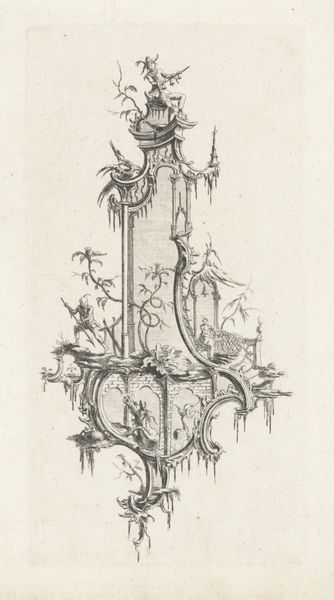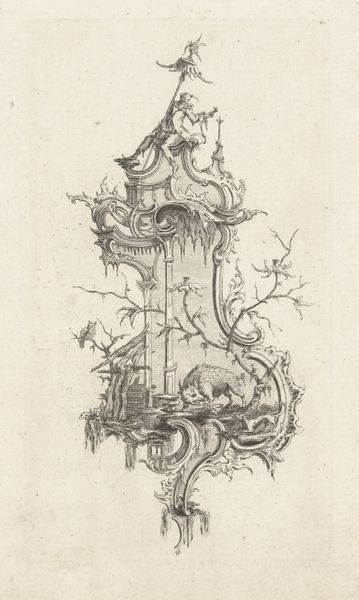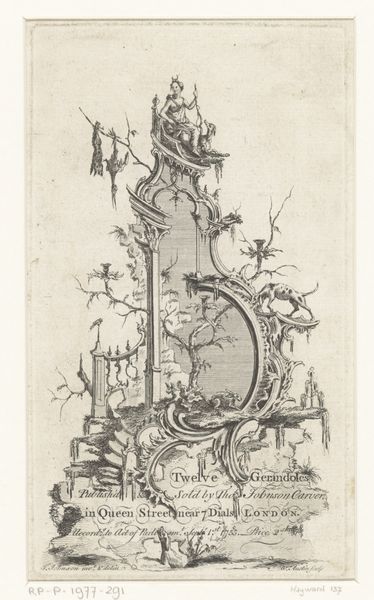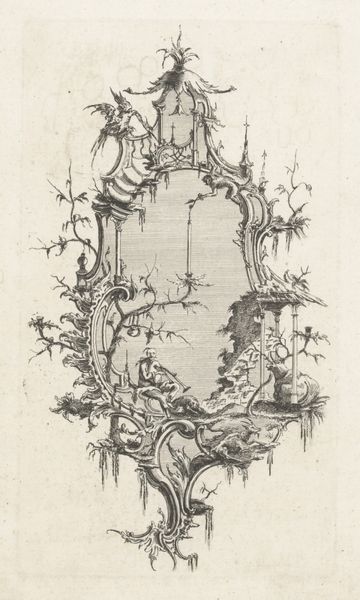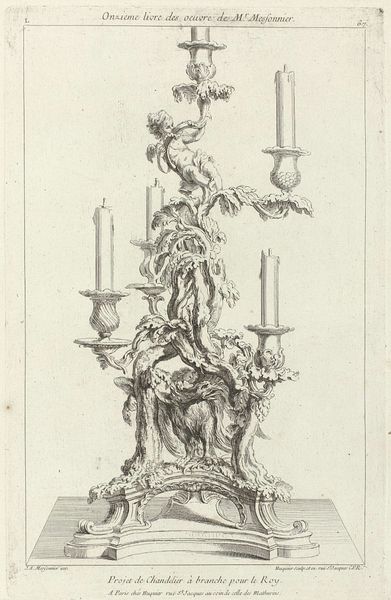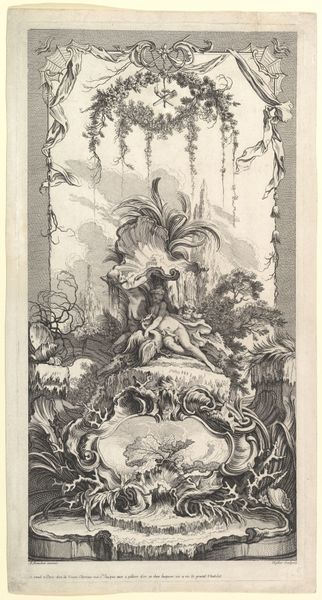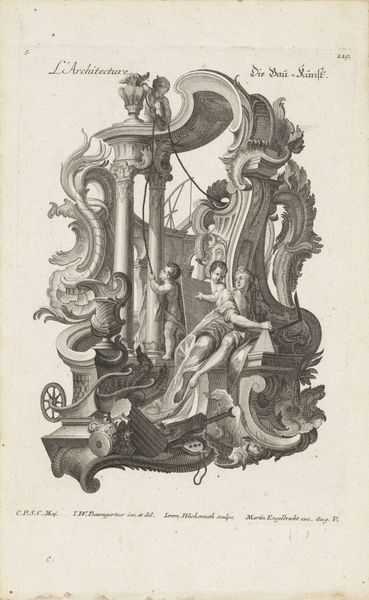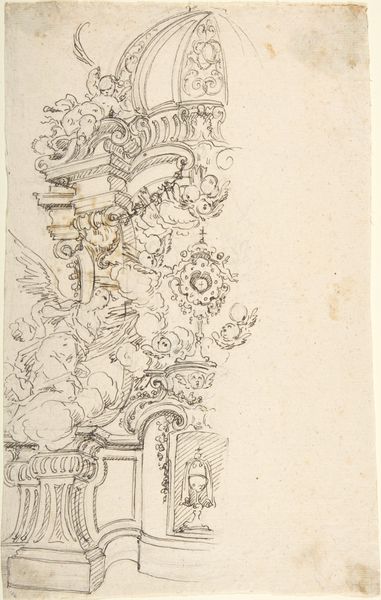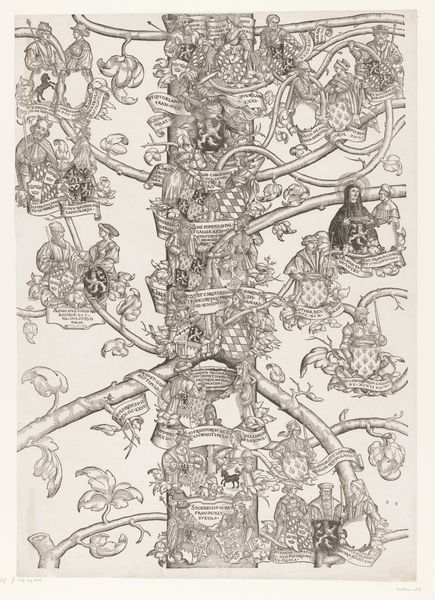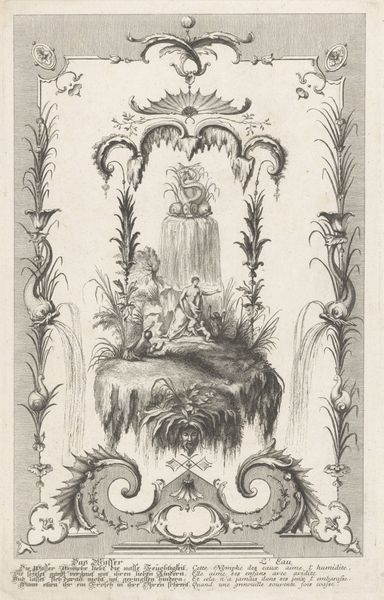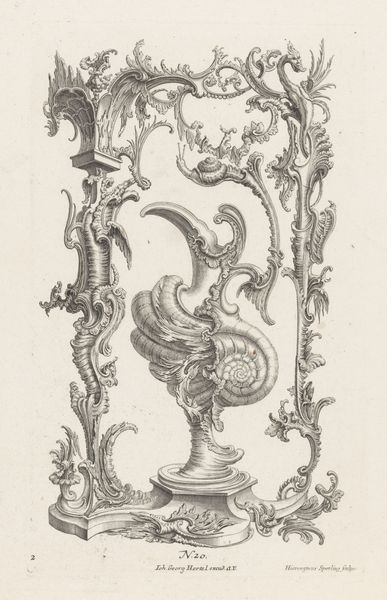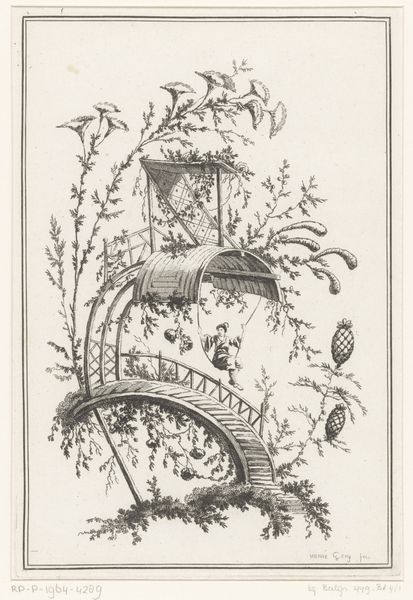
drawing, ink
#
drawing
#
baroque
#
landscape
#
figuration
#
ink
Dimensions: height 189 mm, width 96 mm
Copyright: Rijks Museum: Open Domain
Curator: Here we have "Girandole met opgehangen wolf," an intriguing ink drawing that may date back to between 1755 and 1759. Editor: Well, it's certainly unsettling. At first glance, I thought it was an architectural study, but there’s something unnerving about the ornamentation… Curator: Note the wolf. Suspended as it is, it speaks volumes about vulnerability, and power dynamics in nature. It has strong bestial undertones. The architectural forms—are they celebratory or cages? What’s their symbolic weight here? Editor: It is interesting that you use the word celebratory, since that is how it first reads before noticing it has death imagery hanging. And I see your point—these forms, executed in ink on paper, highlight the craft of architectural design while embedding layers of violence or subjugation. We think of drawings on paper to work towards real objects for human use, but this is ornamental. Are they for celebrating hunts and trade, or designed to create hierarchies of space? Curator: The contrast between delicate baroque and grim subject matter is quite unsettling, isn't it? The symbolic language here is complicated and reveals social undercurrents present even in art pieces crafted for design and pleasure. I'm curious about its original purpose and place within the Rijksmuseum collection. How does it contribute to cultural memory through such peculiar iconography? Editor: Right—it forces us to consider production within a historical frame of exploitation. What kind of paper was used? Who supplied the ink? Where the designs realized as permanent material forms? These decisions always have consequences within the realm of both art and function. I want to follow this wolf from ink to whatever final realization it has through societal channels, to learn more about how baroque styles trickle into society. Curator: Agreed. Considering this, this image offers not just artistic intrigue but also historical and cultural insights. Editor: The true craft of any form lives on, whether we like to accept it, or not.
Comments
No comments
Be the first to comment and join the conversation on the ultimate creative platform.
